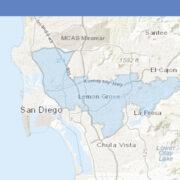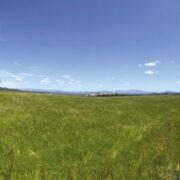YOU might be wondering how a foreign-sounding “group of islands and reefs in an atoll shape” can be found in Philippine waters.
According to a dead-linked source from Wikipedia (Diary of Colonel Bayly: 12th regiment. 1796-1830. Army and Navy Co-operative Society, 1896, pg. 108), Scarborough Shoal (Philippine name: Panatag Shoal; Chinese name: Huangyan Island) “was named after a tea-trade ship Scarborough which was wrecked on the rock with everyone perishing on board in the late 18th century.”
However, the sovereignty of Scarborough Shoal remains disputable, because of its location: between the Macclesfield Bank and the island of Luzon in the South China Sea. According to a Chinese authority, Scarborough Shoal is considered as the biggest atoll in the South China Sea, lying “approximately 170 nautical miles (318 kilometers) east of the Macclesfield Bank and approximately 115 nautical miles (215 kilometers) off Zambales province on the western side of Luzon,” says a report on the IBRU Boundary and Security Bulletin (Summer 1999).
The People’s Republic of China and Taiwan have claimed ownership of the shoal, after the Chinese civil war. In 1997, the Philippines joined in the dispute as well.
According to Wikipedia (citing Philstar.com as the source), the Philippines asserts that the area has been utilized by fishermen since the Spanish rule. In 1957, an oceanographic survey of the area was conducted by the Philippine government, along with the US Navy force who were based in the Subic Naval Base in Zambales. The area was also utilized as “an impact range for defense purposes.” In 1965, an 8.3 meter flag pole with the Philippine flag was raised on the island, followed by the building of a small lighthouse which operated on the same year. In 1992, the lighthouse was rehabilitated by the Philippine Navy, who reported the lighthouse to the International Maritime Organization for inclusion in their List of Lights. However, the lighthouse has been reported as non-operational as of 2009. The Philippines first made its claim on Scarborough Shoal in 1997, raising a flag in the island to make it official.
This week, the most dangerous confrontation between China and the Philippines occurred in the disputed territory.
On April 8, eight Chinese fishing boats were spotted in a lagoon at Scarborough by a Philippine navy surveillance plane. Because of this, the recently acquired BRP Gregorio Del Pilar (the military’s largest warship from the US) was deployed.
Philippine Navy officials were about to detain Chinese fishermen who were caught fishing in the area, but were stopped by two Chinese surveillance craft. The Chinese Embassy released a statement, accusing the Philippine Navy of harassing the fishermen, Philstar.com reported further.
While both countries have agreed to resolve the ongoing standoff in a more diplomatic manner, neither were ready to back down.
Department of Foreign Affairs Secretary Albert Del Rosario gave a stern warning to Chinese Ambassador Ma Keqing, saying that the Philippines is ready to defend itself, when provoked. Both insisted that Scarborough was part of their respective countries’ territories.
In a news conference, Del Rosario said that “we resolved to seek a diplomatic solution to the issue.”
“Nobody will benefit if violence breaks out there,” President Benigno Aquino III said.
Meanwhile, Chinese Foreign Ministry spokesman Liu Weimin said: “We hope the Philippines can focus on China-Philippines friendship, peace and stability, and won’t make new disturbances.”
The US has expressed concern over the increased tensions in the South China Sea saying that it “urges all parties to exercise full restraint and seek a diplomatic resolution.” However, it also emphasized that it’s not taking sides on the territorial dispute.
While the Philippines maybe right on track in asserting its rights for sovereignty, our capabilities for military defense show otherwise.
The country’s recent affirmation of alliance with the US and Japan is construed by some as an act of co-dependency — banking on first world nations who are armed to the teeth when it comes to military defense.
While forming alliances seems to be the wisest (if not, the only best) decision to make, at a time when North Korea and China are playing the military card and have unfair advantage, we still need to take such matters with a grain of salt.
Jose Ma. Montelibano says it best in his Glimpses column, “Can We be Heroes?”
“…if America comes to our rescue, what would motivate it? Surely, it is not love for us, nor love for democracy. How about control or open access of sea lanes? How about having a foothold or a firmer grip in a region dominated by China and Muslims? How about the lure of the same oil and gas that is attracting not just China but other neighboring countries as well? And at what cost to us, to our sovereignty, to our independence?”
“But beggars cannot be choosy. And those who are not willing to die for their country must suffer the consequences of another nation fighting for us. These consequences include staying second class in one’s own land, or experiencing a foreign country which has the same rights as natives of the homeland. We were set free when it was convenient for the United States. It may not be convenient for them to take us back as a de facto territory. Filipinos may have lost our attitude of being pliant and submissive. We could be a bigger headache than what America is willing to pay for.”
“In the end, our salvation cannot be anything less than our courage and our heroism. China may risk killing some of us but it will find too costly to kill millions of us. The world can gang up on it if it does so. But China has to see that millions will risk death rather than allow an interloper to land-grab and to sea-grab. Spain had done it, the United States had done it, and Japan had done it. How many Filipinos have the memory of history and a kind of patriotism that enables us to face the worst danger with an attitude? What else but courage and love of country can see us through hell and back?”
(www.asianjournal.com)
(LA Weekend April 14-17, 2012 Sec A pg. 12)




